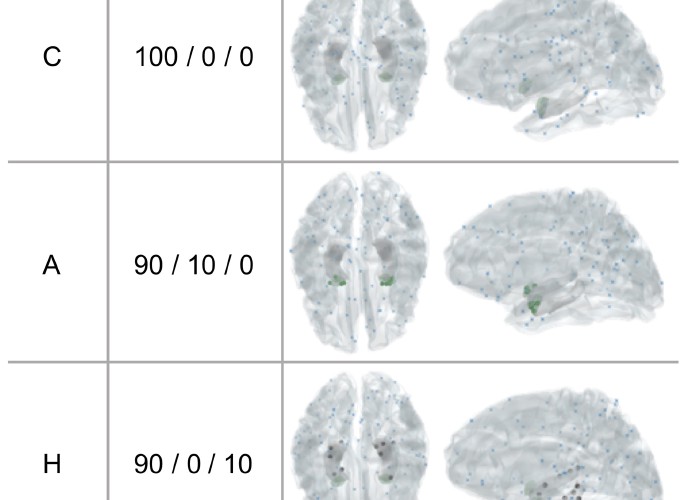High-precision magnetoencephalography for reconstructing amygdalar and hippocampal oscillations during prediction of safety and threat
Abstract
Learning to associate neutral with aversive events in rodents is thought to depend on hippocampal and amygdala oscillations. In humans, oscillations underlying aversive learning are not well characterised, largely due to the technical difficulty of recording from these two structures. Here, we used high‐precision magnetoencephalography (MEG) during human discriminant delay threat conditioning. We constructed generative anatomical models relating neural activity with recorded magnetic fields at the single‐participant level, including the neocortex with or without the possibility of sources originating in the hippocampal and amygdalar structures. Models including neural activity in amygdala and hippocampus explained MEG data during threat conditioning better than exclusively neocortical models. We found that in both amygdala and hippocampus, theta oscillations during anticipation of an aversive event had lower power compared to safety, both during retrieval and extinction of aversive memories. At the same time, theta synchronisation between hippocampus and amygdala increased over repeated retrieval of aversive predictions, but not during safety. Our results suggest that high‐precision MEG is sensitive to neural activity of the human amygdala and hippocampus during threat conditioning and shed light on the oscillation‐mediated mechanisms underpinning retrieval and extinction of fear memories in humans.
